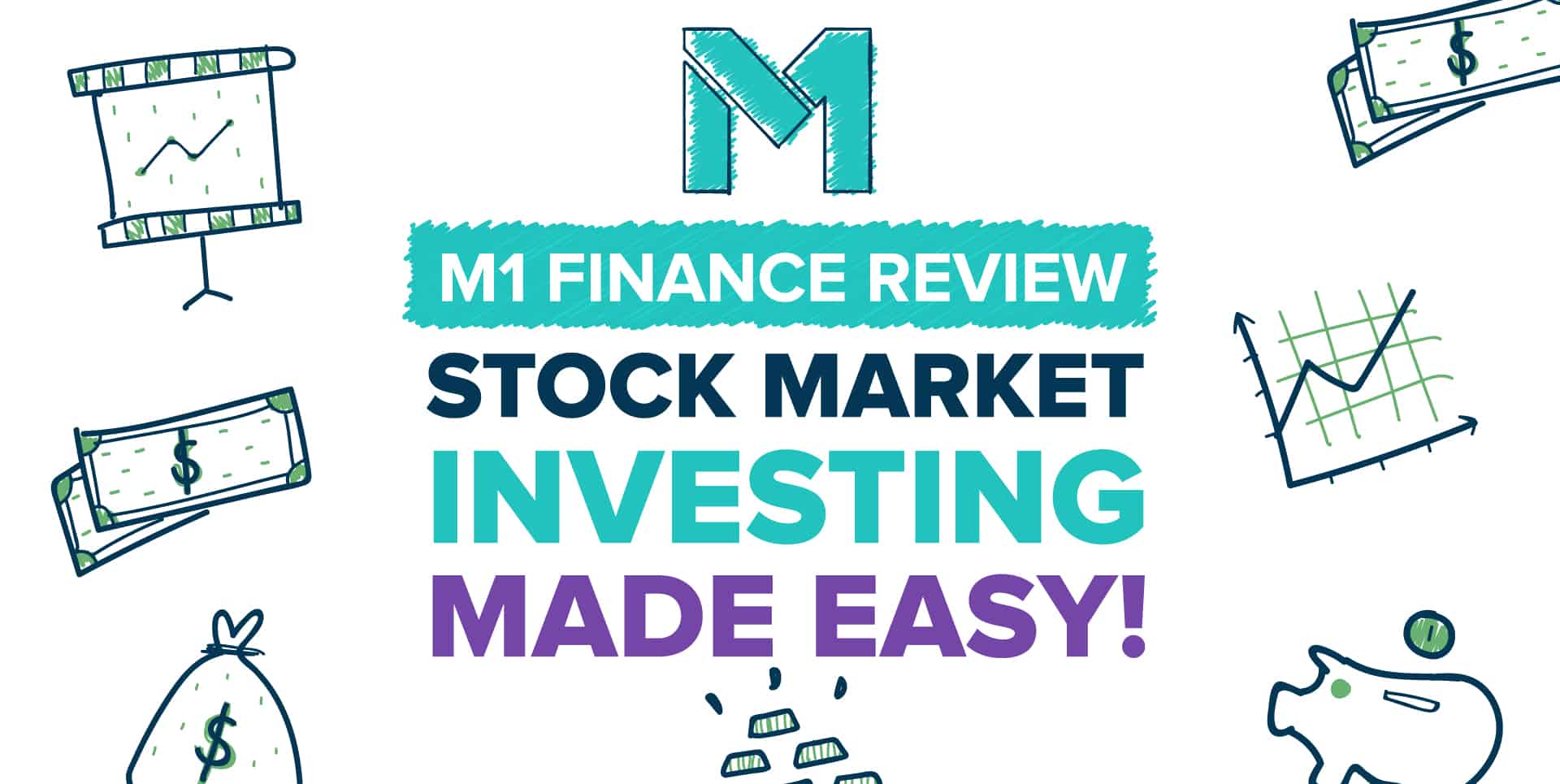What is M1 Finance?
M1 Finance may very well be the next step forward in the evolution of automated investing. That’s because it combines the automated investment management of robo-advisors with the ability to choose your own investments. Until M1 Finance came along, you had to choose between either self-directed investing or a robo-advisor. But not anymore.
M1 Finance allows you to select prebuilt portfolios – which it refers to as “pies” – or to build your own. If you build your own, you can fill it with a mix of exchange traded funds (ETFs) and even individual stocks – which itself is another departure from robo-advisors that rely primarily on ETFs alone.
What’s more, you can hold several pies in your account, with each built around a specific investment theme or for a dedicated purpose.
And best of all, M1 Finance charges no fees to use the service and to manage your pies. All you need to do is choose or create your pies, then M1 Finance takes over the management for you at no cost.
That’s why I think M1 Finance is the latest innovation in the investing universe, and why I set up my own SEP IRA account with them.
M1 Finance Basic Features
Before we dive into how M1 Finance works, let’s first take a look at the basics of an M1 Finance account:
Minimum initial investment:
None! But they do require a minimum of $100 to begin investing in a taxable account, and $500 for a retirement account.
Available account types:
Individual and joint taxable accounts, trusts, and traditional, Roth, rollover, and SEP IRAs.
Minimum initial investment:
None! But they do require a minimum of $100 to begin investing in a taxable account, and $500 for a retirement account.
Available account types:
Individual and joint taxable accounts, trusts, and traditional, Roth, rollover, and SEP IRAs.
M1 Finance fees:
None!
Account custodian:
Your account is held with Apex Clearing – one of the largest investment custodians in the world – and not directly with M1 Finance.
Account protection:
Your investments are protected by SIPC for up to $500,000 in cash and securities, including up to $250,000 in cash. This coverage protects you from broker failure, not from market losses. Your M1 Spend account is covered by FDIC insurance for up to $250,000 per depositor.
Automatic portfolio rebalancing:
Yes.
Automatic dividend reinvestment:
Yes, once accumulated dividends reached at least $10.
Tax-loss harvesting:
Not offered.
Customer contact:
Available by in-app email, Monday through Friday, from 9:30 am to 4:00 pm, Eastern time. There is no phone contact available.
M1 Finance mobile app:
Available on The App Store for iOS devices, 12.0 or later, and is compatible with iPhone, iPad, and iPod touch. Available on Google Play for Android devices, 5.0 and up.
$10 Referral Credit:
Refer a friend to M1 Finance, and you will receive a $10 referral credit. You must have an active and funded M1 Finance account and share your unique referral link with your friend. The friend must fund his or her account within 30 days of signing up. Once earned, the bonus will be paid within 14 days of the friend signing up and funding their account. The offer is available on both new brokerage and IRA accounts. Brokerage accounts require a minimum initial deposit by the friend of $100, and IRAs a minimum of $500.
M1 Finance Pies & Slices
Pies are the most basic part of investing with M1 Finance. Unlike other robo-advisors, which build a single portfolio for you based on your risk tolerance, M1 Finance allows you to create multiple pies based on your own investment goals.
Each pie can be comprised of as many as 100 “slices” – which are made up of ETFs or individual stocks. M1 Finance allows you to choose from more than 6,000 stocks and funds to build your own pies. Or if you prefer, they offer nearly 100 prebuilt pies, referred to as “Expert Pies”. You can invest entirely in expert pies, build your own pies, or use a mix of both.
For each pie, you can create a weighted allocation. For example, you can have 100 individual securities in a pie, each having a target allocation of 1%. Or you can have 20 securities, each representing 5%.
But you can also give a higher weight to certain positions. For example, let’s say you have 25 securities in a pie. You can allocate 10% each to your five favorite securities, which will then make up 50% of the pie. The remaining 20 securities will each have an allocation of 2.5%, and make up the other half of the pie.
Each pie requires a minimum investment of $100. But obviously that won’t go very far when invested over several stocks. That’s not a problem – with M1 Finance you can invest in fractional shares. That means each slice within your pie can be represented by a fraction of a full share of stock in each company. That will give you the ability to create a diversified portfolio with a very small amount of money.
You Can Control Your Own Pies
Once you create a pie, it will be managed by M1 Finance, robo-advisor style. That will include rebalancing to maintain target allocations and automatic dividend reinvestment. And as you add more funds to each pie, they’ll be allocated according to the target set for that portfolio.
But in another major departure from traditional robo-advisors, M1 Finance enables you to change the composition of a pie, as well as the target allocations. In that way, you’ll get the freedom of self-directed investing, with all the benefits of automated investment management.
M1 Finance Spend and Borrow Accounts
Like a growing number of robo-advisors and investment brokers, M1 Finance offers a cash account option. You can use it for either spending or earning interest on your uninvested funds.
M1 Finance offers two different basic account types, the Basic M1 Account and their M1 Plus Account. Each gives you spending and borrowing capability within your account, but under different terms for each.
The basic provisions of each account are as follows:
| Provisions | Basic M1 Account | M1 Plus Account |
|---|---|---|
| Invest | Use intelligent automation to invest in a portfolio of stocks and ETFs, for free. | Get more flexibility. Invest in the morning, in the afternoon or both. |
| Borrow | At 3.5% Access your flexible portfolio line of credit with just $10,000 invested. | At 2% Unlock an even lower rate with a 1.5% reduction of our standard base rate. |
| Spend | Access your cash and spend with an M1 checking account and debit card. | Earn 1% cash back when you spend and 1% APY when you don't. |
M1 Finance Spend provides you with a Visa debit card. It can be used either with the Basic M1 Account or with the M1 Plus Account. But if you have an M1 Plus Account, you’ll enjoy the benefit of earning 1% cashback when you spend using the debit card. One ATM fee per month will be reimbursed with the Basic M1 Account, while four will be covered with the M1 Plus Account.
With either account, you can accept direct deposits, as well as transfer money between your Borrow and Spend accounts and your investment accounts.
In addition, the M1 Plus Account pays you 1% on your cash balances (Basic M1 doesn’t offer this benefit). However, you should be aware that the M1 Plus Account does charge an annual fee of $125. You’ll need to make sure your cash balance and/or spending activity will justify paying that fee.
For example, you would need to complete at least $12,500 in debit card purchases or maintain a balance of at least $12,500 for a full year – or a combination of both – to offset the annual fee. Only if you exceed the threshold will the M1 Plus Account make financial sense.
The best of digital banking
With M1 Spend, you can integrate your investments, your portfolio line of credit, and your checking account. Plus, check out how the two tiers of M1 Spend compare with big banks:
| Category | M1 | M1 Plus | Big Banks |
|---|---|---|---|
| APY | 0% | 1% | 0.04% |
| Cashback | 0% | 1% | 0% |
| ATM fees covered | Once a Month | 4 times per month | Varies |
| Annual fee | 0$ | 125$ | 144$ |
| Balance minimum (to avoid monthly fees) | 0$ | 0$ | 1500$ |
| Integration with investment account | Yes | Yes | Varies |
| FDIC insurance upto $250,000 | Yes | Yes | Yes |
M1 Finance Borrow
Both the Basic M1 Account and M1 Plus Account allow you to borrow against your invested balance. As you can see from the screenshots above, you’ll pay a very low 3.5% APR on funds borrowed on a Basic M1 Account, and just 2% on the M1 Plus Account.
With either account, you’ll have access to a portfolio line of credit equal to 35% of your portfolio value. And you can access the funds in less than 10 seconds.
Best of all, you won’t need to complete any paperwork, clear a loan application process, or even set up a specific repayment schedule. You can simply repay the credit line in your own time.
Funds can be used for any purpose, like paying off credit card debt, student loans, or even a car loan. You can even pay for large expenses, like a wedding or a vacation, or use the account as an emergency fund
You should be aware that the Borrow feature is a margin loan. That means the interest rate you’ll be paying will be variable, based on the Federal Funds Rate. If that rate increases, so will the interest rate you’re paying on your credit line.
As a margin loan, the credit line is also subject to maintenance calls. If your portfolio declines in value, you may be required to put up additional funds to maintain your borrowing limit. Alternatively, you may be required to sell securities to pay down the credit line.
M1 Finance Pros & Cons
M1 Finance Pros:
- M1 Finance combines the best of self-directed investing and robo-advisors – choose your own investments, and even change the allocations at any time, and each pie will be automatically managed for you.
- There are no fees of any kind – giving you the benefit of keeping 100% of your investment earnings.
- Fractional shares – you can invest in a fully diversified portfolio with a small amount of money, using small slivers of many different stocks.
- Expert Pies – up to 100 of them – are available if you don’t feel comfortable building your own.
- Dynamic rebalancing – your portfolio will be rebalanced periodically to maintain target allocations. As well, new funds added to each pie will be invested based on your target allocations.
- No minimum investment required – you can open an account with no money at all, but you will need to provide at least $100 to begin investing in a taxable investment account, or at least $500 in a retirement account.
- Invest in individual stocks – most robo-advisors invest only in ETFs; M1 Finance lets you include individual stocks.
- M1 Borrow and Spend accounts – M1 Finance’s cash accounts provide you with both spending capabilities and earning interest on your cash balances. The Borrow provision enables you to borrow against your investments at very low interest rates.
M1 Finance Cons:
- No mutual funds are offered – but this is typical of robo-advisors.
- Unintuitive desktop – I found the desktop to be a bit confusing at first, but it does get easier once you get used to it.
- No tax-loss harvesting – this is a feature that is becoming more common among robo-advisors, and it’s used to minimize taxes from capital gains. M1 Finance doesn’t offer it, so automatic rebalancing, manual rebalancing, or selling of securities within your pies could generate taxable sales.
- No stock trading – since M1 Finance offers investing in individual stocks, you may want to use the platform for trading, or even for day trading. But trading of stocks is not allowed.
- No phone contact – customer contact is by in-app email only, and only during regular business hours.






